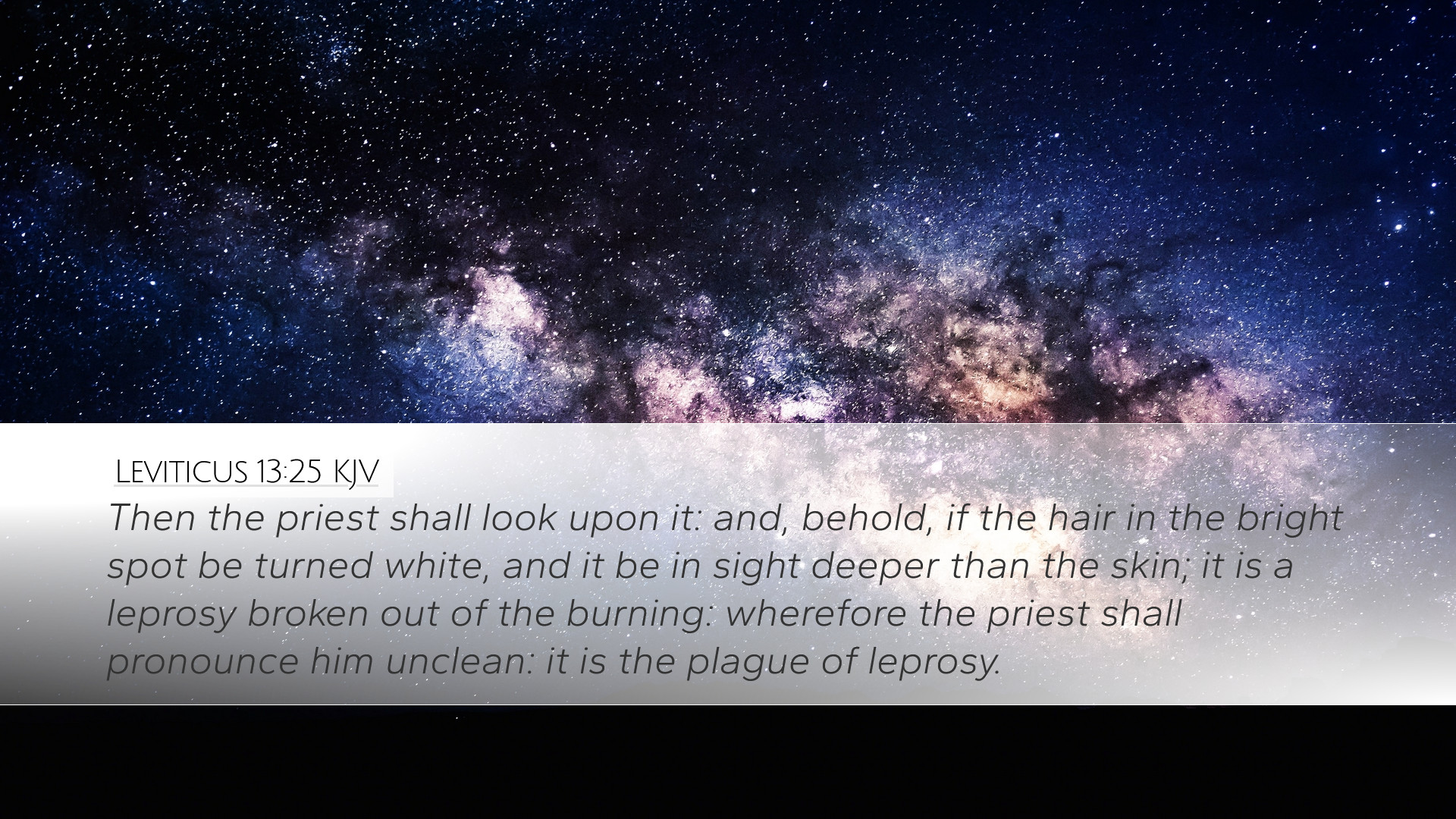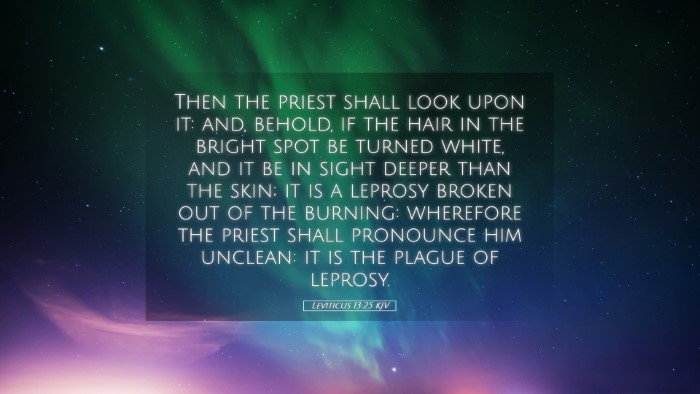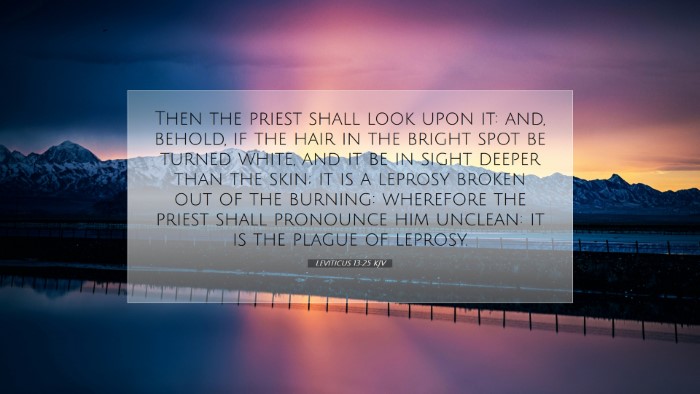Commentary on Leviticus 13:25
Leviticus 13:25 states: "Then the priest shall look at it, and indeed, if the hair of the plague has turned white, and the plague appears to be deeper than the skin of his body, it is a leprous plague. Then the priest shall pronounce him unclean."
This verse lies within the context of the laws regarding leprosy, emphasizing the role of the priest as the divinely appointed figure responsible for diagnosing and pronouncing judgments on individuals suffering from skin diseases.
Contextual Analysis
This passage is part of a broader framework that outlines various diseases, particularly those considered 'leprous.' The Hebrew term for this condition includes a range of skin afflictions, and the priest’s role is paramount in discerning the true nature of these diseases.
The Role of the Priest
According to the commentaries by Matthew Henry and Albert Barnes:
- Divine Appointment: The priest is depicted not merely as a medical examiner but as a spiritual authority appointed to carry out God’s will in the community. This highlights the intersection of the sacred and the social—leprosy not only made one physically unclean but also rendered them socially isolated.
- Responsibility and Authority: The priest must verify the depth of the plague, which serves as a reminder of the severity of sin and its penetration into the human condition. Clarke suggests that the priest's discernment extends beyond physical symptoms to the moral implications of what leprosy represents.
Symbolism of the Condition
The white hair and the deeper appearance of the plague carry rich theological symbolism:
- Symbol of Sinfulness: Hair turning white can be seen as a representation of aging, decay, and the effects of sin, which can lead to spiritual death. As Henry notes, "it is a clear token of corruption and judgment."
- Depth of Sin: The depth of the plague as diagnosed by the priest speaks metaphorically to the idea that some sins manifest not just on the surface but within the depths of the heart. This points to the need for profound internal reflection and repentance.
Spiritual Implications
The implications for the spiritual life of both the individual and the community are profound:
- Holiness and Separation: The priest’s pronouncement of being unclean signifies the severe consequences of sin in the life of believers. It reminds congregants that they are called to live set apart for God, emphasizing the importance of holiness.
- Community and Isolation: An individual diagnosed with leprosy experienced not only physical affliction but also social ostracism. This underscores the communal aspect of sin and righteousness—how individual actions can influence community purity.
- Hope and Restoration: While the pronouncement is severe, the subsequent chapters illustrate God’s provision for purification and restoration. Clarke notes that God's laws, while strict, always have an undercurrent of mercy and the potential for redemption.
Practical Applications for Today's Believers
As pastors, students, and scholars reflect on this verse, there are several practical applications:
- Examine the Heart: Believers should continuously evaluate their spiritual condition, asking if there are areas in their lives that require healing and restoration. Reflecting on the interior struggle with sin is vital to spiritual growth.
- Encourage Community Healing: Churches should foster an environment where individuals can acknowledge afflictions—both physical and spiritual. This promotes collective healing and support within the body of Christ.
- Emphasize the Role of Spiritual Oversight: Just as priests had a significant role in community health, spiritual leaders today must guide their congregations in matters of morality and ethics, helping them discern the nature of their struggles against sin.
Conclusion
In summary, Leviticus 13:25 serves as a poignant reminder of the intersection between physical affliction and spiritual reality. It compels pastors, theologians, and believers to consider the deeper implications of holiness, the role of authority in spiritual matters, and the ever-present hope of redemption through Christ. Through God’s laws, we are not only confronted with the seriousness of sin but also invited to experience the cleansing power of His grace.


